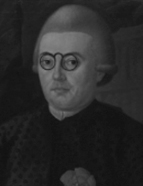

To these two historiographical strands of the canonist’s work must be added the cultural texts mentioned above, most of which were published in the Memórias da Academia das Ciências de Lisboa (Memoirs of the Lisbon Academy of Sciences). With Memória da Literatura sagrada dos Judeus portugueses desde o tempo da Monarquia até aos fins do século XV (Memoir of the Sacred Literature of the Portuguese Jews from the Time of the Monarchy to the End of the 15th Century), the author began a series of studies that continued until the 18th century. This is a valuable and discerning survey, free from religious considerations, despite the clear stance he took in favour of ethnic and religious tolerance, which he always defended. His interest in the work of Portuguese mathematicians, such as Pedro Nunes and Francisco de Melo, and of foreigners in Portugal who devoted themselves to the same science, must be understood in the context of his reformist convictions, in which scientific investment was seen as an essential factor for economic and social improvement. His vast erudition and responsibilities as a librarian since the time he held the position at the University of Coimbra, but especially later as organiser of the Royal Public Library of the University of Coimbra ( ) in March 1804, partly explain his concern with developing pioneering studies, for the time, on typography and the very special care he devoted to numismatics as an indispensable tool for the most accurate dating possible. Finally, the aesthetic interests of António Ribeiro dos Santos, who wrote poetry under the Arcadian name Elpino Duriense, are documented not only through his valuable theoretical and historical systematisation of the arts and letters, but also in his study Das origens e progressos da poesia portuguesa (The origins and progress of Portuguese poetry).
This work is financed by national funds through FCT - Foundation for Science and Technology, I.P, in the scope of the projects UIDB/04311/2020 and UIDP/04311/2020.
